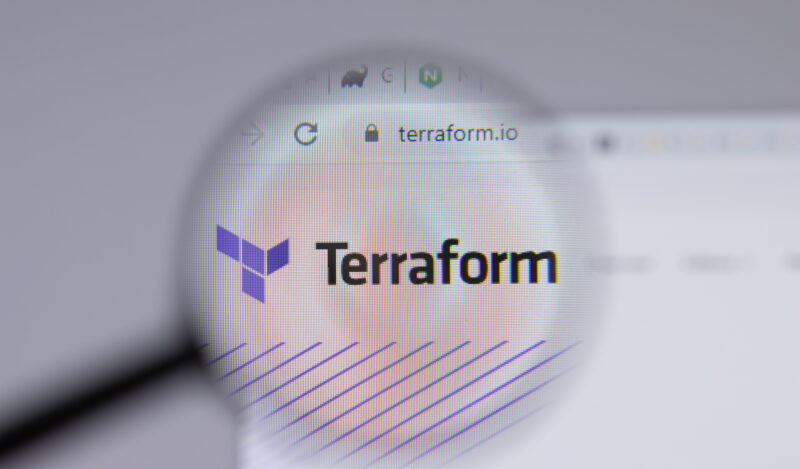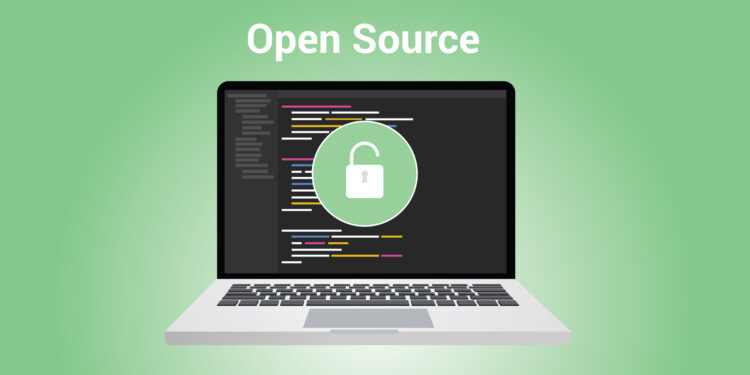
Terraform è uno strumento innovativo utilizzabile con successo su qualsiasi tipo di provider Cloud.
Come funziona? Quali vantaggi comporta?
Analizziamo ogni dettaglio in questo articolo!
Indice dei contenuti
Cos’è Terraform?
Terraform è uno strumento open source con cui creare, modificare o eliminare delle infrastrutture sul Cloud.
È stato sviluppato da HashiCorp e si basa sul principio di Infrastructure as Code, o IaC.
Può essere considerato come uno strumento di codifica dichiarativo e permette di semplificare i processi di sviluppo del codice e risolvere i problemi legati alla molteplicità dei vendor.
Terraform è quindi la soluzione ideale per gestire con facilità ed efficienza un’infrastruttura tramite codice.
Funziona bene su qualsiasi provider e lo si può utilizzare per configurare tutti i provider Cloud.
Esegue il provisioning dell’infrastruttura in diversi Data Center presenti sul Cloud e in ambienti on-premise e riesegue in sicurezza il provisioning dell’infrastruttura in risposta alle variazioni della configurazione.
Oggi Terraform è oggi degli strumenti di automazione dell’infrastruttura più usati, scelto da sempre più aziende per implementare un ambiente Cloud ibrido o Multicloud con successo.
Tutti i vantaggi di questa tecnologia
Terraform è uno strumento IaC ed è quindi una grossa risorsa per gli sviluppatori, che possono così configurare un’infrastruttura del tutto automatizzata, veloce e ripetibile.
Un sistema automatizzato è infatti molto più veloce, perché non serve più spostarsi manualmente da un’interfaccia all’altra per eseguire delle implementazioni.
Anche l’affidabilità aumenta, poiché in una infrastruttura ridotta e semplice da gestire è più difficile commettere errori, configurare male una risorsa o eseguire scorrettamente un provisioning dei servizi.
Un altro grosso vantaggio di Terraform è che, a differenza di altri strumenti, può essere utilizzato su ogni provider di servizi Cloud.
Inoltre supera il problema delle infrastrutture mutevoli che rischiano nel tempo di cambiare drasticamente rispetto alla versione originale: Terrafrom esegue infatti il provisioning di un’infrastruttura immutabile.
In questo modo le nuove configurazioni sostituiscono quelle vecchie, che possono essere conservate per abilitare i rollback, e si può prevenire ed evitare che una configurazione non corrisponda più all’ambiente effettivo.
Essendoci un provisioning veloce, si possono anche eseguire modifiche sperimentali e testarle con investimenti minimi di tempo e risorse
Infine Terraform è uno sfotware open source, il che significa che può contare sul supporto di una grossa community che crea plugin per la piattaforma, impegnandosi a migliorarla sempre di più.

Terraform: quali sono i moduli
Per configurare correttamente Terraform, si usano dei file appositi chiamati moduli.
L’ambiente di esecuzione Terraform è pensato per la modularità e per una crescita futura, il che significa che l’insieme di sottodirectory possono comporre una libreria riutilizzabile di risorse.
I moduli sono infatti utilizzabili più volte per diverse risorse dell’infrastruttura e permettono di automatizzare risorse complesse con strutture configurabili.
Per creare un modulo bisogna scrivere un file, chiamato modulo radice. Da questo derivano poi altri moduli, i moduli secondari, che insieme rendono la configurazione più veloce e concisa.
Tra i file necessari per creare dei moduli in Terraform, troviamo:
- LICENSE: indica la licenza d’uso che distribuirà il modulo, rendendo chiare le condizioni di utilizzo.
- main.tf: comprende tutte le informazioni riguardanti la configurazione.
- README.md: indica come usare il modulo riportando la documentazione in formato markdown.
- outputs.tf: definisce i valori di output del modulo, comunicando le informazioni su una parte di infrastruttura agli altri elementi di configurazione.
- variables.tf: definisce le variabili del modulo, che possono essere configurate come argomenti nel blocco del modulo.
Terraform vs. Kubernetes
Terraform e Kubernetes sono due tecnologie simili che possono cooperare con efficacia per ottenere ottimi risultati.
Kubernetes è infatti una piattaforma per orchestrare e controllare i container.
È un software open source che permette di gestire i carichi di lavoro con scalabilità, di monitorare tutti i livelli di sicurezza e implementare sui nodi in un cluster di calcolo.
Terraform ha invece un raggio d’azione molto più ampio e consente ai programmatori di automatizzare un’intera infrastruttura che si estende a più Cloud pubblici e privati.
Una buona soluzione può quindi essere sfruttare Terraform per automatizzare il provisioning di Kubernetes – soprattutto i cluster gestiti sul Cloud – e l’implementazione delle applicazioni.
Desideri parlare con un nostro esperto? Contattaci
Ultime News Data Center
-

-

Mercato cloud in Italia: tendenze e numeri da osservare
5 Settembre 2024 -

-

-

Quali sono le differenze tra SQL Server e Oracle?
13 Maggio 2024 -

Cos’è e come fare monitoraggio di Microsoft SQL Server
23 Aprile 2024 -

Guida SQL Server, tutto quello che devi sapere
19 Aprile 2024 -

-

-

FaaS: Cos’è, Come funziona, Vantaggi, Casi d’uso ed Esempi
26 Febbraio 2024











